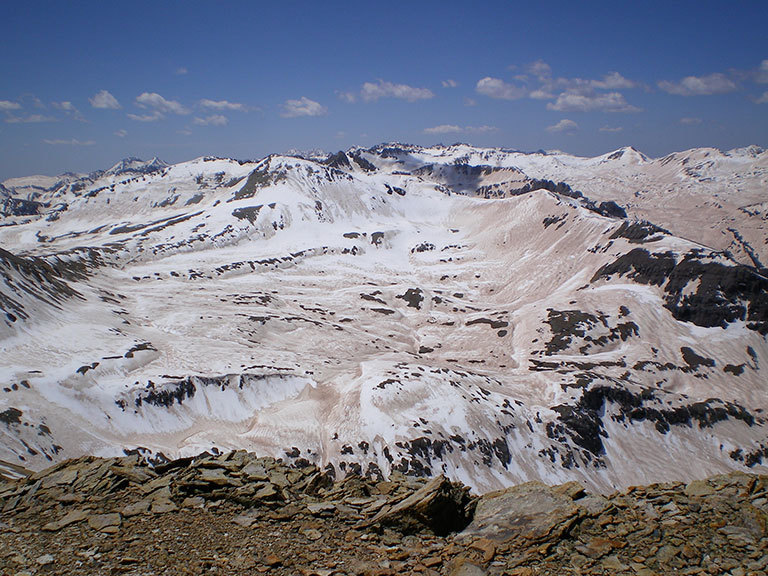News | July 26, 2015
Scientists link earlier melting of snow to dark aerosols

A photograph of the extreme dust deposition from the deserts of the Colorado Plateau onto the Colorado Rockies snowpack in 2009. Taken from the high point of the Senator Beck Basin in the San Juan Mountains, it captures the extent of the impact of darkening in which the snow albedo dropped to about 30%, more than doubling the absorption of sunlight. Credit: S. McKenzie Skiles, Snow Optics Laboratory, NASA/JPL. View larger image.
Tiny particles suspended in the air, known as aerosols, can darken snow and ice causing it to absorb more of the sun’s energy. But until recently, scientists rarely considered the effect of all three major types of light-absorbing aerosols together in climate models.
The study looked at three types of light-absorbing aerosols – dust, black carbon and organic carbon. Black carbon and organic carbon are produced from the burning of fossil fuels, like coal and oil, as well as biofuels and biomass, such as forests.
With their snow darkening effect added to NASA’s GEOS-5 climate model, scientists analyzed results from 2002 to 2011, and compared them to model runs done without the aerosols on snow. They found that the aerosols indeed played a role in absorbing more of the sun’s energy. Over broad places in the Northern Hemisphere, the darkened snow caused some surface temperatures to be up to 10 degrees Fahrenheit warmer than it would be if the snow were pristine. As a result, warmer, snow-darkened areas had less snow in spring than they would have had under pristine snow conditions.
According to the study, dust’s snow darkening effect significantly contributed to surface warming in Central Asia and the western Himalayas. Black carbon’s snow darkening effect had a larger impact primarily in Europe, the eastern Himalayas and East Asia. It had a smaller impact in North America. Organic carbon’s snow darkening effect was relatively lower but present in regions such as southeastern Siberia, northeastern East Asia and western Canada.
“As we add more of these aerosols to the mix, we are potentially increasing our overall impact on Earth’s climate,” said research scientist Teppei Yasunari at NASA’s Goddard Space Flight Center in Greenbelt, Maryland.
Research: Impact of snow darkening via dust, black carbon, and organic carbon on boreal spring climate in the Earth system





